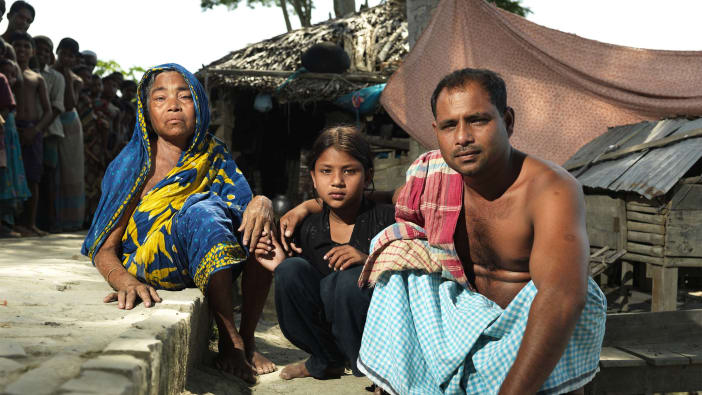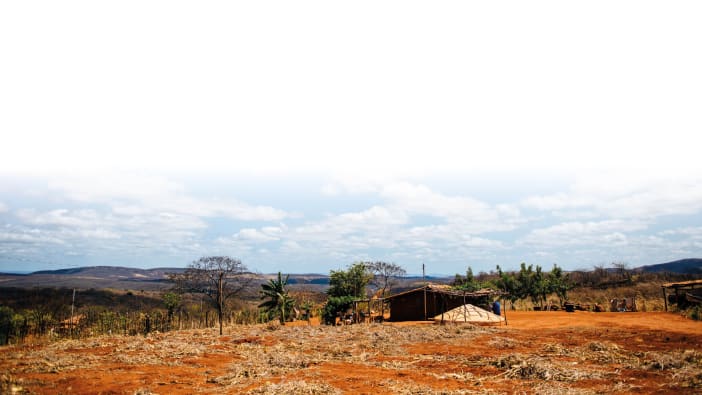By Heather Faulkner
Haiti is the western part of the Caribbean island shared with the Dominican Republic. Haiti means ‘mountainous’, but today Haiti’s steep slopes are scarred by massive erosion. Years ago Haiti was covered in mature forest with trees including valuable timber species such as West Indian mahogany (Swietenia mahagoni) and Haitian Oak (Catalpa longissima). Today’s Haitian population relies on wood for all sorts of uses but it is rarely produced in an organised fashion. Many of the rocky mountain slopes are stripped by goats of all but the toughest scrub vegetation
A quick source of cash?
About 50 million trees are cut down every year, many for poles which are used (for example) to stake tomato plants. The planned planting and harvesting of forests is rare. The collection of tree seeds for planting is largely unknown. Less than 3 million trees are produced each year in tree nurseries. But everyone in Haiti uses trees. To chop down a small tree and make charcoal is the usual way of obtaining some quick cash. Most of the population use charcoal and wood as fuel. Fruit, shade, timber and medicine come from trees. Where I worked, in the tree nursery established by the Baptist Haiti Mission south of Port-au-Prince, the most common requests were for fruit trees such as avocado, mango and citrus, rather than for fuel trees to provide supplies for the future.
Plannned harvesting
Trees are not seen as a crop. Once, an elderly man cutting young trees from a barren region to make charcoal was asked what he would do if he cut down the last tree. ‘God will give us more,’ he replied. A group of young people keen to plant a forest were asked how they would use it. They were horrified, saying the trees would not be used but just be there to look at. (However, in Haiti an armed guard might be needed to protect them!) Given the demands on Haiti’s trees, any planting scheme needs to include planned harvesting to be realistic. There is a great variety of native and non-native species to fill every need. Some, such as the Hispaniolan pine (Pinus occidentalis), can grow on the most unlikely sites and give good quality timber. Others, such as Leucaena leucocephala, could be used to colonise eroded gullies and harvested for charcoal. On the other side of the island, in the Dominican Republic, vast areas of Leucaena woodlots are managed for this purpose. The tree does not need to be grown in a nursery. It can be directly seeded into the ground in the rainy season.
Wally Turnbull of the Baptist Haiti Mission wonders how the Kenscoff Valley would look if he had not set up the mission’s tree nursery. Trees are given out to farmers to plant around the edges of their vegetable plots. However, Wally wonders if the nursery’s existence has meant that farmers use it as an excuse not to raise their own trees. Looking back, Wally is not sure if tree nurseries are the answer for Haiti because of the intensive work required to look after them. He believes the local farming method which gathers a team of workers together occasionally for a long, hard day’s work might point to a more appropriate solution. Arranging intensive days when seeds (such as loquat, citrus, coffee, prunus, leucaena) could be directly sown into prepared sites might be a better way of meeting the huge need for reforestation. Cuttings, such as mulberry, could also be planted in such ways.
Willingness to take action
Although the will to plant trees in Haiti is small, at least it is there. With information and education about the consequences of deforestation and erosion, the desire to plant trees will grow. Now and again you meet an enthusiast – someone with the ability to see beyond any number of problems, whether practical or in motivating others. Someone who has what they call volonté – will. Such volonté can make light work of any number of problems. In the words of Pastor Frantz Clotaire, a man with much volonté who runs an agriculture school in southern Haiti, ‘Developman – se moun li ye’ – ‘Development is people.’ It is for people and it can only be done by people, each playing their part and each with volonté and dreams to make their world a better place.
Heather Faulkner spent a year working in the tree nursery of the Baptist Haiti Mission with Tearfund.










